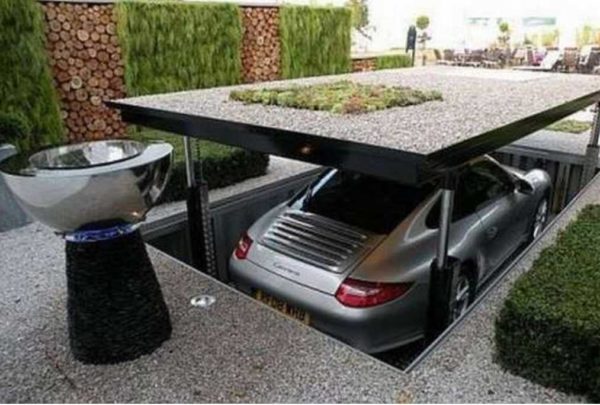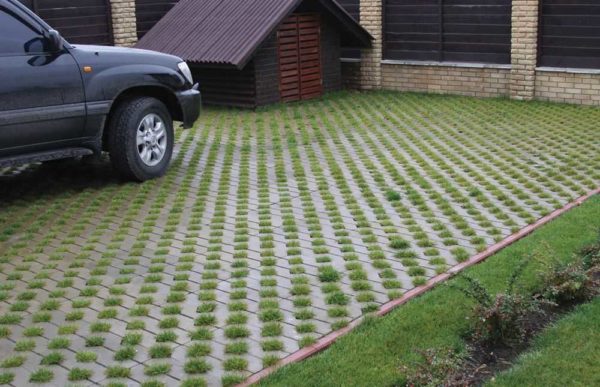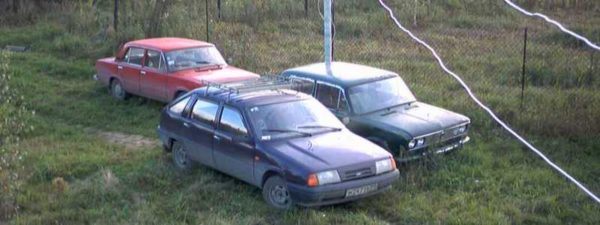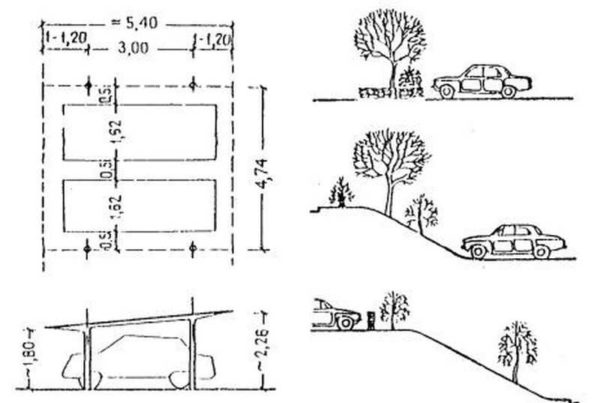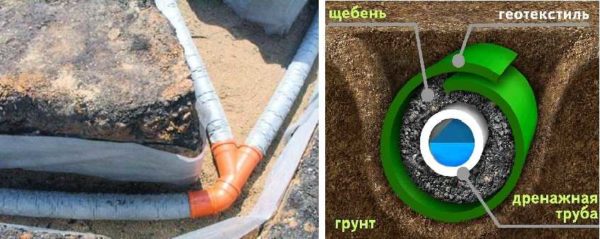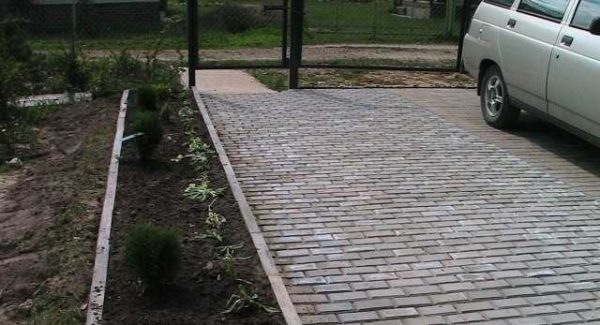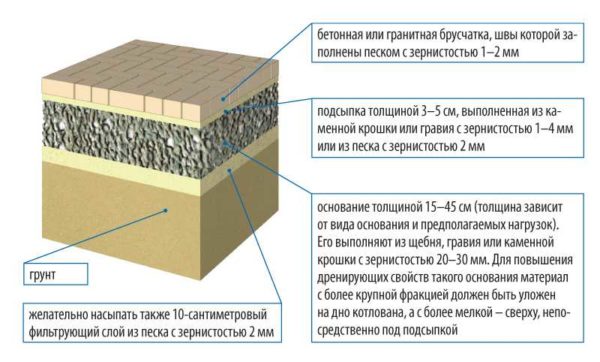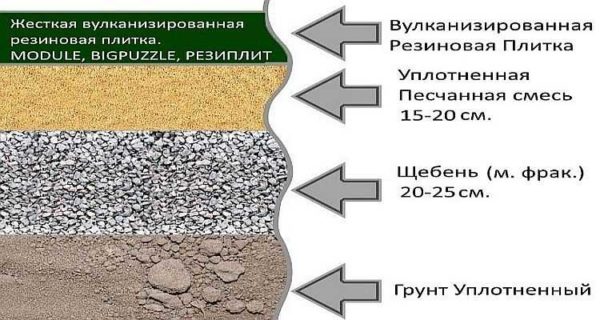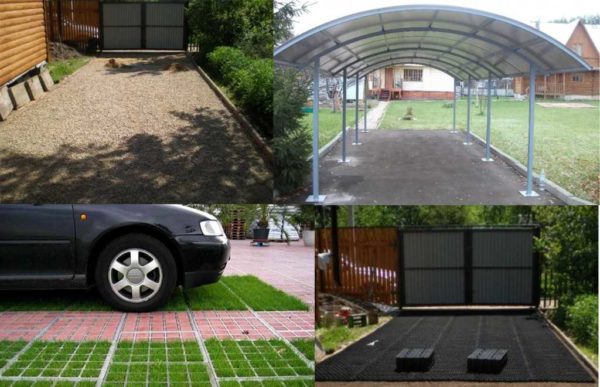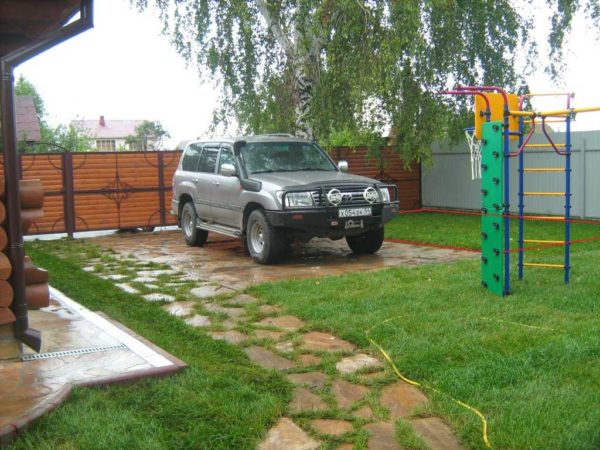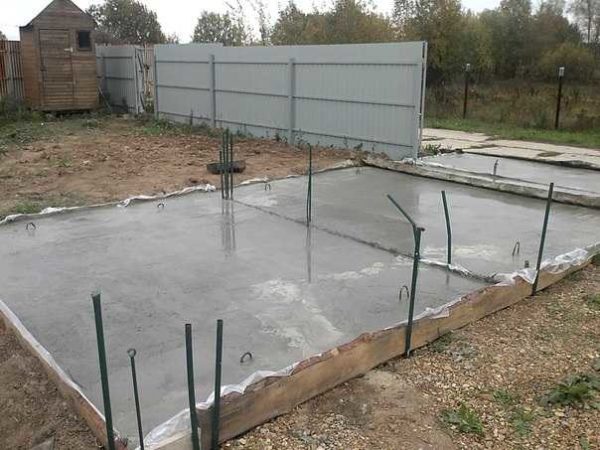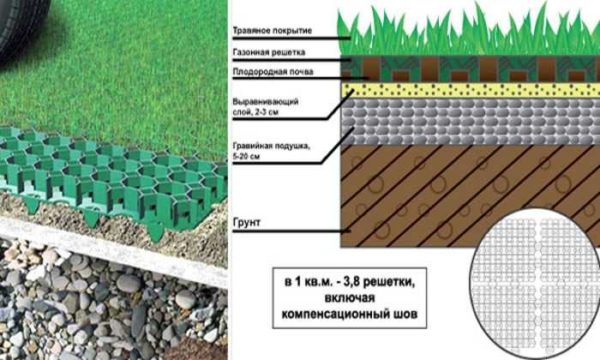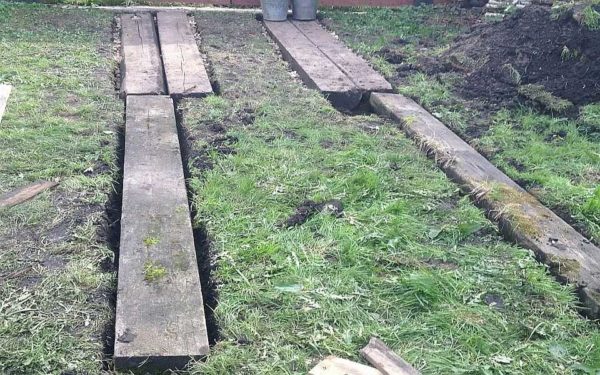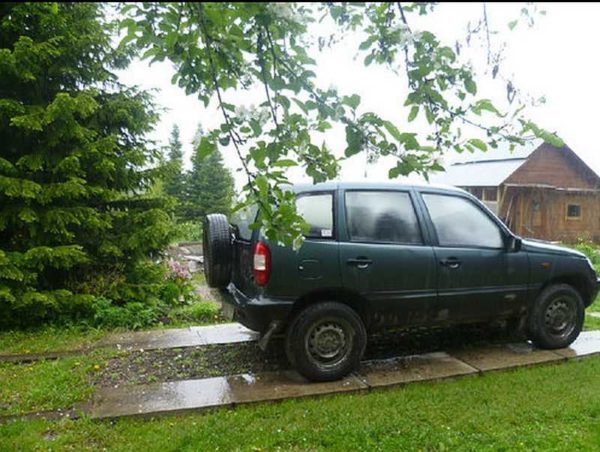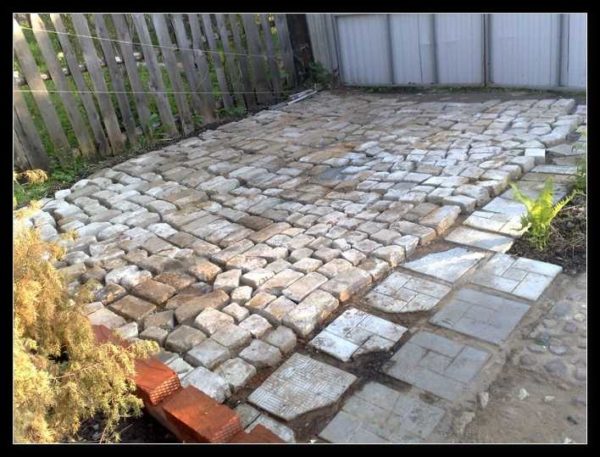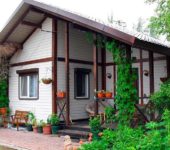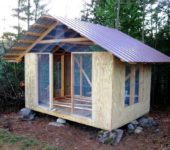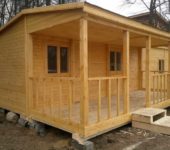A platform for a car in the country - do it yourself parking
After rains or in spring, coming from a summer cottage with a kilogram of dirt on your boots is a dubious pleasure. It is for this reason that you begin to think about the need for parking in the country. Full confidence comes after the next rain, when it will not be possible to leave the site the first time. And not even from the fifth. Then there is a desire to make yourself a summer cottage parking. There is nothing complicated in it and it is quite possible to do it yourself.
The content of the article
Types of country parking lots
Cottages, and the requirements for comfort, are different for everyone, and parking in the country for a car is more than a dozen options. There are only seven types of coverage, and also their combinations, the possibility of installing canopies. They differ in operational characteristics, costs. So, the coverage for parking a car in the country can be of the following types:
- From rubble or pebbles (bulk).
- Lawn or eco-parking.
- From paving slabs.
- Concrete.
- Asphalt.
- Rubber tiles.
- Flagstone.
- Parking grill.
The cheapest in the device, at the same time convenient in operation, a parking lot made of rubble or pebbles. With the right device (use geotextile) crushed stone does not mix with the soil for many years. Even if geotextiles were not laid (this often happens), then adding rubble is not a problem. After some time, the bottom cake of crushed stone and soil becomes so dense and durable that this process (mixing with the soil) stops.
Parking in the country: the pros and cons of different options
A separate and very important plus, which is given by parking in a crushed stone country house, is natural drainage. You don't need to build a drain. Water seeps between stones and goes into the ground, taking away pollution with it. But this type of site is not suitable for sites with high groundwater levels. Standing in a puddle on rubble is not the best solution to the issue, although the problem is being solved the creation of a drainage system for the entire site.
Green parking has become increasingly popular in recent years. Is not regular lawn, but special. Under the grass is a plastic grill, which redistributes the load on the ground and prevents the wheels from falling through. Caring for such a parking lot is similar to caring for a lawn - mowing, watering. Weeding is not required, as the preparatory work involves removing the soil, that is, most of the roots are gone. Herbal varieties are used special and this is the problem: they are expensive. The second disadvantage is the possibility of freezing (and the seeds are expensive, and greens do not grow too quickly). But it's beautiful. And it can be used not only as a parking, but also as a recreation area.
A platform for a car in a country house made of paving slabs is the best option for a hard surface for heaving soils. And the water does not stay too long - it goes into the cracks between the tiles, and the integrity of the coating does not suffer when heaving. There are two more options: concrete and asphalt summer cottages - reliable and durable, but only if all the preliminary work is done correctly. Their disadvantage is that they are expensive, the appearance of cracks is very noticeable.
The device of a country parking area: preparatory work
Despite the different coverings for parking a car in the country, the preparatory work is not much different. The difference may be in the layer on which the coating is laid (for example, it is necessary to pour a layer of sand when paving with paving slabs), but the whole cake and the list of other works are the same.
General recommendations
The first thing to decide is the place. The parking lot at the dacha is usually located either right near the gate, or not far from them. And that makes sense. But this zone should not be the lowest point, otherwise the water will constantly stagnate here, and the height difference is also undesirable here - putting the car on the handbrake, putting pads on is not quite what you want.
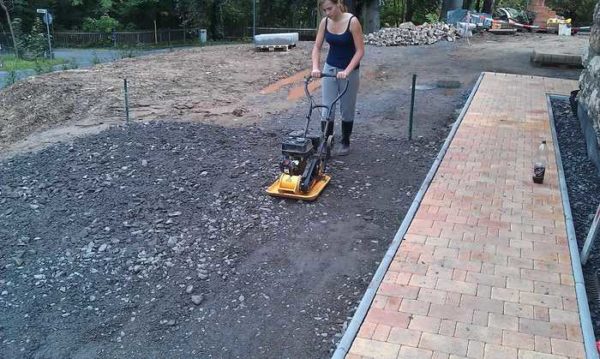
The best way to compact sand and gravel is with a vibratory plate. If not, you can make a homemade rammer. Take a log, attach handles, attach a solid platform (thick board) from below. By picking up and throwing this implement, compacting sand / rubble
With all this, continuous coatings such as concrete or asphalt should not be brought to zero in level: water after washing the car or rain will not leave. So that it does not stagnate, it will be necessary to form a slight slope - from the center to the edges. A slope of a couple of degrees is good. And the car will stand stable and the water will drain.
Dimensions
The dimensions of the country parking depend on the planned number of cars "living" there. One car has enough plot of 3 * 5 meters, i.e. 15 m². This space is quite enough so as not to think about the fact that you need to park exactly in the center, otherwise you will have to go out onto the lawn, into the flower bed, etc. Parking in a summer house of such an area makes it possible to safely bypass the car in front and behind.
If space is limited, the length can be reduced by 0.5 m, but at this size, you can walk either in front of the car or behind it. Only if you have a solid-sized jeep, it is better to increase the width of the site by at least 50 cm, and even better - by a meter. These machines are large, and they need more space.
If there will be two cars to park and they are of "standard" sizes, the comfortable length of parking at the dacha remains the same - 5 m. With enough space, we take the same 3 meters wide. That is, to park two cars, a 5 * 6 m area will be needed (5 meters is the length). With a shortage of space, the width and length can be reduced by 0.5 meters (4.5 * 5.5). But in this case, it will not be possible to open the doors of the car at the same time and it will also be difficult to go around the car around.
Check in for the car: water drain
The next step is to decide whether you need drainage around the parking lot or not. If the soil drains water well in a natural way and the coverage is discontinuous (tiles, lawn, stone), it is quite possible to do without drainage measures. If at least one of the conditions is missing, you will have to do drainage. There are many options, but there are three of the simplest:
- If the water on the site usually does not stagnate, along the perimeter of the site with a continuous coating (concrete, asphalt, rubber tiles) sprinkle with crushed stone 30-40 cm wide. The water flows down, gets into the crushed stone floor and gradually goes into the ground.
- If a drainage system is made on the site, drainage pipes are laid around the perimeter (below the level of the coating by 10 cm, fill it with rubble, pebbles, mulch, sand on top, plant a lawn). These pipes are introduced into the general drainage system (do not forget to make a couple of inspection hatches for cleaning.
- Install / fill storm trays along the perimeter, which storm sewer.
When can you not think about diverting water? When you have a sandy area or heavy rainfall is rare. Then there are no problems. Another option is a natural bias. In this case, the water will leave by gravity, but you will still solve the storm sewer problem, only on the scale of the entire site.
With or without border
Any coating on the site for a car in the country will last longer if the area is fenced with a curb. In the case of arranging a bulk gravel or pebble parking, the curb will still not allow the bedding to scatter over the site. In the case of using paving slabs or stone, the presence of limiters can also be considered mandatory. They are laid on a sand layer, and the sand can be washed away by streams of rain.
This will not happen if the parking lot at the dacha is at the same level or slightly below the rest of the site. But in this case, it will always be humid here and the water will not leave, which clearly will not benefit your car. So the presence of a border is desirable - even bury a brick around the perimeter, but then a natural stone is better. Or pour it yourself out of concrete, but use ready-made curbs less hassle. For a budget option, you can use reinforced concrete grape posts.
Layers: general sequence
After you have chosen a parking space for a car in the country, mark the selected dimensions of the site (taking into account the drainage system). Next, we work in this order:
- We remove a layer of soil 30-35 cm deep.
- We remove all stones, roots, align (it is not necessary to the horizon, but there should be no holes and humps).
- We take a rammer, compact the soil.
- We spread geotextiles. Its dimensions should be 0.7-1 meters larger than the dimensions of the site, the edges should be wrapped around the edges of the pit for parking the car. When installing drainage, a drainage pipe is wrapped in the "surplus" of geotextile. And so, the edges can be hidden under the grass, pressed with a curb, sprinkled with a layer of gravel.
- Pour a layer of sand, level, ram. In a compacted form, a layer of 10-15 cm. In order to make it easier to ram, the sand is wetted with water.
- Add a layer of rubble. It is advisable to use two fractions: large and medium.
- A layer of coarse gravel (20-40 mm) is laid on the sand, leveled, rammed. Its thickness is 10 cm in finished form.
- A layer of gravel of a medium fraction (5-20 mm). Aligned, rammed. Its thickness is also about 10-15 cm.
- Subsequent layers depend on the type of site coverage. We will consider them in a little more detail in the next paragraph.
In general terms, these are all the rules and features of the car parking in the country. More accurate layer sizes depend on the soil structure and the planned load. For example, for loose (sand and sandy loam) and unstable (peat) soils, to give greater stability, a road mesh can be laid on the bottom of the pit. It will eliminate punching.
Second example: a layer of geotextile can be placed between sand and gravel. The bottom layer (at the bottom of the pit) is necessary to stabilize the base, and also to prevent plants from germinating. Intermediate layers provide better protection against plants and also prevent mixing of the layers. In this case, even a heavy vehicle will not leave a track.
Features of sites with different surfaces
Coarse sand or fine granite chips (1-4 mm) are poured under paving slabs, bricks, flagstones, rubber tiles. Please note that for parking for cars, tiles need a thickness not less than 50 mm (under the tracks you can take from 30 mm). Another point: the smaller the size of the tiles, which the parking lot is paved with, the less noticeable the inevitable "play" of the levels of bricks will be.
Natural stone and concrete slabs
If it is decided to make a parking lot of natural stone sawn with slabs, it should also be taken 4-5 cm thick. You should not stack too large pieces: there is a high probability that they will break. They should not be laid close, but leaving gaps of a couple of millimeters. The gaps are filled with sand, into which you can add abrasion-resistant lawn seeds.If you make the same paths, it turns out beautifully, organically, and even there will be no dirt.
If the grass does not appeal to you (it is more difficult to clean, you need to cut it somehow), fill the gaps between the plates with a mixture of sand and cement (1 part cement, 3 parts sand). Sweep it off the stones so that there is nothing on them and pour the area (just not with a stream, but in small drops, and so that it does not flow). The mixture will turn into concrete. It will take a certain time to cure: 7 days at a temperature of + 20 ° C to achieve 50% strength and another two weeks for full "ripening". Until the moment of 50% strength gain, it is desirable that there are no showers during this period, and if they start, cover the area with polyethylene. Water itself is not terrible, streams are terrible, which can wash out fragile concrete.
This option has only one drawback: the high price of the stone. To reduce costs, large format ready-made paving slabs can be used: 50 * 50 cm or so. They are also laid on a gravel-sand cushion. All the same, only the slabs have an artificial origin and a clear geometry.
Concrete
For a concrete site, you will need to install around the perimeter formwork... Then it will be necessary to make a reinforcing frame in the form of a cage from a metal rod. A bar is taken with a diameter of 10-15 mm, a lattice is folded from it with a step of 10-15 cm, at the junction they are tied with a special wire (knitting). The resulting mesh is placed on the stops so that it is raised above the compacted rubble by 3-5 cm, and the layer of concrete on top should also be at least 10 cm (preferably 15).
If a concrete parking lot in a country house is made for two or more cars, expansion joints will be required. To do this, wooden planks 0.7-1 cm thick are laid with an edge on a lattice made of reinforcement.The width of the planks is equal to the height of the concrete layer (they can be used as guides when leveling concrete mix). They are laid in increments of 2 meters.
In the case of concrete, you will have to wait a long time for the start of operation of your parking lot. The concrete must stand for at least 28 days. And this is if the temperature does not drop below + 20 ° C. In this case, you need to ensure that the surface does not dry out. To do this, it is necessary to water the area, and so that the water does not dry out quickly, sketch matting, old bags, etc. on top, throw a piece of polyethylene on top. This coating helps to maintain humidity, evens out the temperature (local overheating is harmful) and protects the surface from drops that are inevitable during watering.
If you can't wait that long, add an "accelerator" to the concrete. An additive that accelerates the hardening of concrete. The term can be reduced to 7-10 days. But carefully read the features of caring for such concrete.
Green lawn parking
When arranging a green parking lot, special gratings are placed on the gravel layer, the gaps of which are filled with fertile soil and sown with grass seeds. For parking a passenger car, and sometimes a jeep, a 10 cm high grating is sufficient. If it is supposed to put heavy vehicles (trucks with materials) under unloading on the site, the grating is needed at least 15 cm high.
The difference in the cost of green parking grids is significant. But the difference in price is usually justified: some eco-parks do not sag, look normal, others crumple, turning the surface into a mess of soil and grass. Therefore, when choosing gratings, do not pursue cheapness.
It is not very convenient to look after the grassy parking: the rake gets stuck in the grate, not every lawn mower can work safely. Therefore, many owners of such sites are disappointed. But recently another tendency has appeared - instead of soil and grass, medium gravel is poured into the gratings, and the top is covered with small gravel or pebbles.Why is this option better than a conventional fill site? The platform does not squeeze under the wheels even of a heavily loaded vehicle. This option is ideal for clayey soils.
Economy options for arrivals and parking
Although parking in a crushed stone country house is considered the most inexpensive, its total cost is considerable. If it is not possible to invest the appropriate amount or the arrival will be temporary, you can try to get by with more modest options.
The cheapest check-in is from the laid old sleepers. Decommissioned sleepers, if desired, can be found and ask for very little for them. Since they are already impregnated with everything possible from rotting, they can be laid directly in the ground. But in order to prevent them from sticking out during heaving, it is better to dig a trench and lay at least 5 cm of rubble or construction waste on the bottom. On the sides of the sleepers, it is also advisable to make crushed stone filling at least 5 cm each.
One sleeper is not enough for a ride (unless you are a super driver), and two under the wheel is enough. The option, of course, is temporary, but it is more than suitable for the period of arrangement of the territory.
There is a similar idea in a more civilized version: take concrete paving slabs measuring 50 * 50 cm or 60 * 60 cm. Lay them in two parallel rows - under the wheels. It is not worth pressing them one to the other - it is better to leave a ground gap. To avoid bulging during heaving on clay soils, as in the previous version, make at least a minimal dump of rubble.
There are also cobbled summer cottages. Brick, natural stone is used for paving. These options are good if the soil is not clay. Brick will collapse most quickly - it is not intended for such conditions, but as a temporary measure for arrangement it will do quite well.

